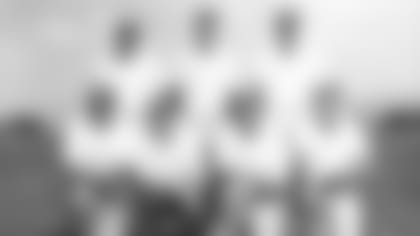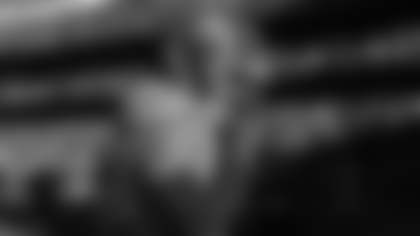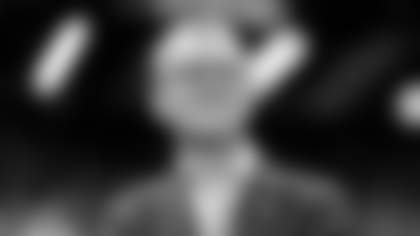I not only enjoy the past, but I especially like putting it into context with the present.
This past week, the Broncos began to welcome back employees to the UCHealth Training Center headquarters, as well as to Empower Field at Mile High.
That is welcome news for everyone and a harbinger of more good news for the future.
I also had cause to do some research into the 1962 American Football League season at the same time, and it struck me how very much things have changed and developed.
One might be tempted to say, "So what?" but that is a little like dismissing our ancestors. Without the past, there is no present.
So this week a maximum of 75 Broncos employees were allowed back into the two spotlessly cleaned facilities.
That total of 75 is greater than the entire Broncos organization, including players, in 1962.
At that time, pro football was just beginning to explode into the American sports consciousness, married to all fans by the dramatic growth of television.
In 1962, the coaching and player personnel team picture included seven individuals — and one of them, Jack Faulkner, was both head coach and general manager. Now the Broncos have 23 full-time coaches on staff, a number matched by many other pro teams and major college football programs.
Another person pictured in that group and listed as "quarterback coach" in fact was someone coaching himself! Frank Tripucka was the de-facto quarterbacks coach, as well as the starting quarterback, a future Ring of Famer who was an AFL All-Star and the first passer in football history to throw for 3,000 yards in a single season.

Faulkner was the AFL Coach of the Year after that 7-7 season. (The Broncos got off to a 7-2 start and surprised everyone before the rest of the AFL figured us out and we lost our last five to finish 7-7.)
That record stood as the Broncos' only .500 season until the first winning season 11 years later, a 7-5-2 mark in 1973, and still four more years away from the team's first AFC West championship, playoff berth and appearance in Super Bowl XII in 1977.
But Faulkner's biggest contribution, in my opinion, was to literally burn the notorious mustard-and-brown uniforms and instead have us go with a color combination of orange, blue and white.
That's right.
The fabled orange and blue that the Broncos wear today were first donned in 1962, in part for three very good reasons. One, the mustard-and-brown uniforms were both hideous and the laughingstock of pro football; two, other teams already had versions of the always popular red-and-blue combos; and three, Faulkner had an Ohio background, where the Cleveland Browns played and had become legends in orange.
Of course, when Faulkner took over the Broncos in 1962, they were still in the team's original headquarters.
No, not the buildings at 5700 Logan, which actually was the second home of Denver pro football.
The original headquarters were in a Quonset hut, which still stands today, at what I think is still 2060 Clay Street.
If you have a notion to drive past it, the original headquarters sits among new and attractive high-rise residential buildings, but is easy to identify: It is the brick-faced front (which did not exist then) with a Quonset hut in the rear.
If you do not know what a Quonset hut is, think of the old television show, "Gomer Pyle, U.S.M.C." The barracks in which the marines resided were Quonset huts.
You will know it when you see it.
Of course, Empower Field at Mile High was unimaginable, and the Broncos still played in Bears Stadium, which had been home to the minor league baseball Denver Bears since 1948.
The 1962 season was also the first for the Broncos to wear helmets that featured orange and blue — and very few fans are aware that the familiar white caricature horse that graced the helmets was originally blue.
In fact, fans would occasionally call me and ask about that early in my career, and it eventually caused me to make a pilgrimage to the Denver Public Library to examine microfilm of old newspapers, as well as to revisit the highlight films from 1962.
The Denver Post once had a glossy Sunday magazine called "Empire," and in fact it had a color cover featuring Tripucka, defensive backs coach Gary Glick, and the new helmet, clearly with a blue Bronco on the side.
I have campaigned for years in favor of that helmet being represented in our lobby trophy case along with the others, as it was not only official but the only helmet worn by the team through the first five games of 1962.
Why did the Broncos change to a white helmet?
Because in 1962 all televised sports events were still in black and white, and the blue horse did not show up well on the orange helmet.
Back in the day, when things were different, the now legendary orange and blue were brand new to Broncos Country.
There is no time like the present, and the Broncos now have 250 employees, excluding players, and we all share great expectations for a return to the glory of playoff contention in the coming season.
But back then, in 1962, the first season in which the Broncos climbed out of the primordial mud to a .500 record, nobody gave a thought about six decades down the road.
However, the foundation was being set for one of the great franchises in pro football, and for the Broncos' role in the growth and development of the Mile High City that is enjoyed today.















